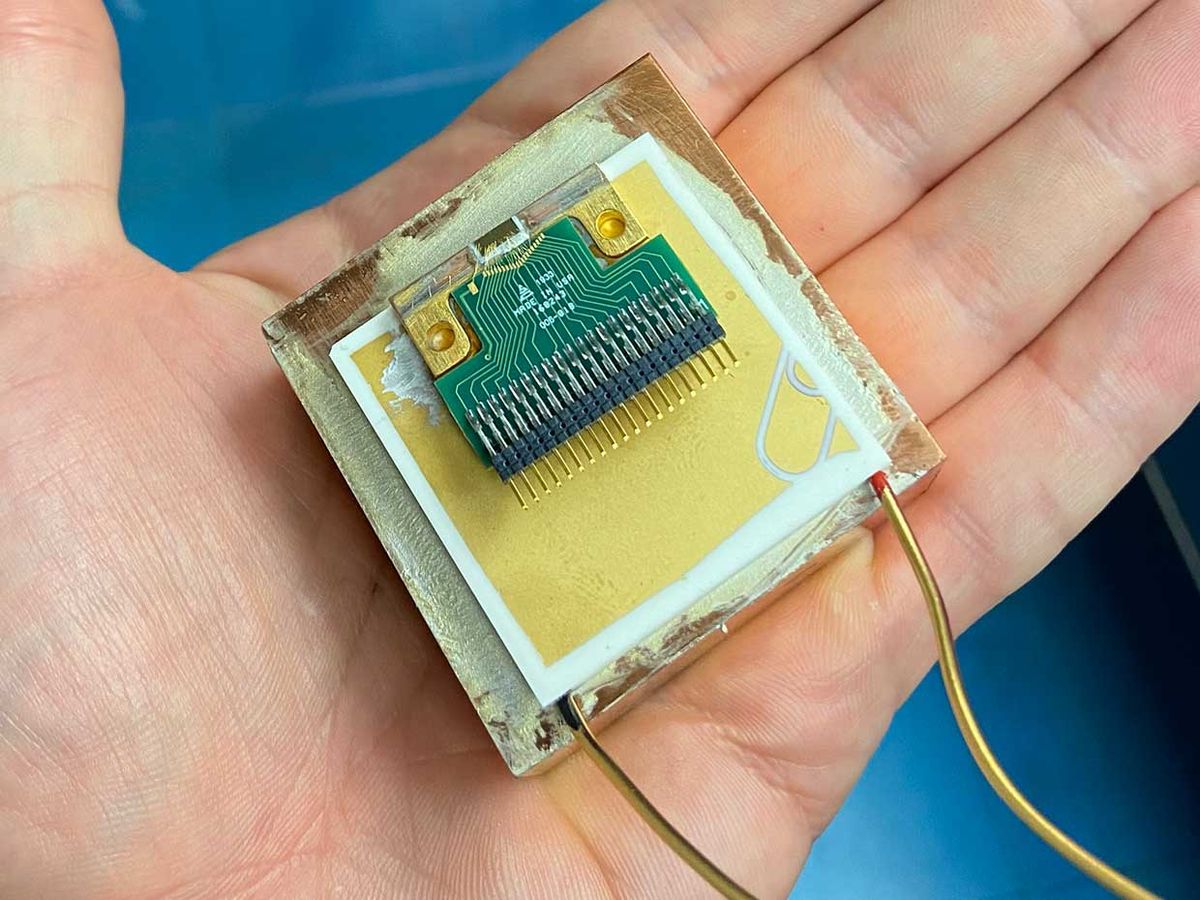Terahertz rays could have a dizzying array of applications, from high-speed wireless networks to detecting cancers and bombs. Now researchers say they may finally have created a portable, high-powered terahertz laser.
Terahertz waves (also called submillimeter radiation or far-infrared light) lie between optical waves and microwaves on the electromagnetic spectrum. Ranging in frequency from 0.1 to 10 terahertz, terahertz rays could find many applications in imaging, such as detecting many explosives and illegal drugs, scanning for cancers, identifying protein structures, non-destructive testing and quality control. They could also be key to future high-speed wireless networks, which will transmit data at terabits (trillions of bits) per second.
However, terahertz rays are largely restricted to laboratory settings due to a lack of powerful and compact terahertz sources. Conventional semiconductor devices can generate terahertz waves ranging either below 1 terahertz or above 10 terahertz in frequency. The range of frequencies in the middle, known as the terahertz gap, might prove especially valuable for imaging, bomb detection, cancer detection and chemical analysis applications, says Qing Hu, an electrical engineer at MIT.
Previous research had suggested that so-called quantum cascade lasers might bridge this gap. At the heart of these devices are wafers consisting of alternating layers of semiconducting material with different levels of electrical conductivity. When electrically charged, electrons remain confined in the more electrically conductive layers between the more electrically resistant layers. Eventually these electrons emit light in a "quantum cascade."
However, quantum cascade lasers designed to emit light within the terahertz gap long required temperatures below -63 degrees C. The problem was that at higher temperatures, the confined electrons leaked through the more electrically resistant layers.

Now scientists at MIT and the University of Waterloo in Canada have devised a high-power quantum cascade laser that emits roughly 4-terahertz light with a maximum operating temperature of -23 degrees C. This suggests that it could work using compact thermoelectric coolers instead of bulky cryogenics, enabling portable applications.
The wafer in this laser consisted of a more electrically conductive gallium arsenide sheet sandwiched between more electrically resistant aluminum gallium arsenide layers. The scientists doubled the concentration of aluminum in the aluminum gallium arsenide layers to better confine the electrons within the gallium arsenide sheet. They also carefully tuned the thicknesses of these layers to help ensure these electrons emitted light in a quantum cascade.
Hu says they can likely adjust the laser to also emit between 2 to 7 terahertz in frequency. Between 7 and 10 terahertz, a quantum cascade laser based on a different material such as gallium nitride might be necessary, he says.
As to whether lasers could operate within the terahertz gap at even higher temperatures, "I would almost unequivocally say terahertz operations at room temperature or above can be achieved," Hu says. "This means we could even have handheld terahertz lasers."
The scientists detailed their findings online Nov. 2 in the journal Nature Photonics.
Charles Q. Choi is a science reporter who contributes regularly to IEEE Spectrum. He has written for Scientific American, The New York Times, Wired, and Science, among others.



